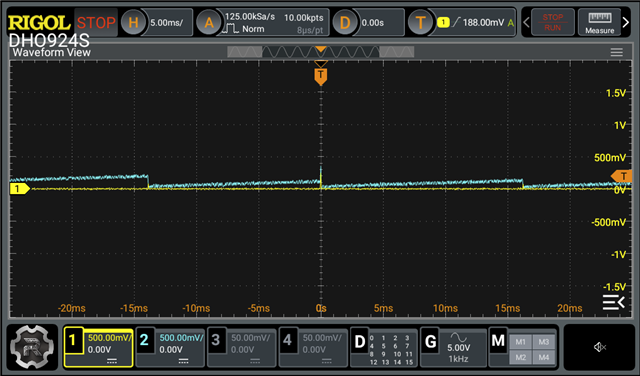Other Parts Discussed in Thread: TINA-TI
Tool/software:
Hello,
I'm troubleshooting a peak detector circuit using two OPA357 op amps (please, see TINA file) and encountering unexpected behavior. As shown in the image, the output voltage increases over time, even though the input signal is held at 0 V. Supply voltage is within the recommended range for the OPA357. Could this be related to input bias currents, capacitor leakage, or something specific to the OPA357? Any insights or suggestions would be greatly appreciated!


